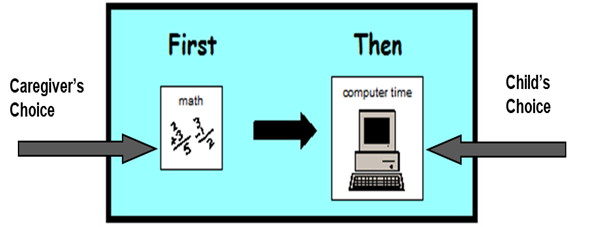How to Prevent Challenging Behaviour – Setting your child up for success
Have you ever wondered what you can do to help prevent escalations in challenging behaviour from your child with Autism Spectrum Disorder (ASD)? Or, how you can make meltdowns from your child less likely to occur?
Did you know that some behaviours can be addressed by making simple modifications to your child’s day? Proactive strategies, also known as antecedent strategies, are tools used to help prevent or limit challenging behaviour from occurring. They are simple modifications that can be done to help support your child’s day and set them up for success.
Below are five proactive strategies that you can incorporate to help limit your child from engaging in challenging behaviour:
1) Alter your child’s environment. This could include rearranging items in a room to provide an area for self-regulation, or it could include using a visual schedule to show the expected activities in the order in which they are to be completed.
2) Use social narratives to help prepare your child for upcoming events. Social narratives are individualized short stories outlining the expectations of a child in a variety of social situations, such as getting on the school bus or going to a doctor. Autism Little Learners shares great examples of social narratives for common situations. You can view them on their website here. Please note a social narrative should be individualized for the needs of each child.
3) Incorporate transition warnings when your child is going to change activities or tasks. Transitional warnings are meant for your child to have time to prepare in advance of removing a preferred item or transitioning to a new activity. These may be a verbal warning, using a timer to count down the time left, or a familiar song used for a certain transition.
4) Use a first-then board to provide information to your child around an expectation. This is a two-part visual sequence of activities, the second activity acts as a motivation tool to the first less preferred activity. In the example below, the child must complete math and can then spend time on the computer. Visit the Parent Resources section of our Kinark Kreates videos for a full video on using first-then boards!

5) Reinforce your child’s positive behaviour. Provide descriptive praise when you notice your child is engaging in positive behaviour and let them know exactly what it is that they are doing well using simple words they will understand. This can encourage or motivate them to do it again.
By implementing some of these strategies into your family’s regular routine you can even prevent new challenging behaviours from developing.
If you found this information helpful, you can sign up for our mailing list here to be the first to know about new blog posts and resources. You can also connect with us on our Facebook and Instagram pages for weekly resources from our team.


Recent Comments